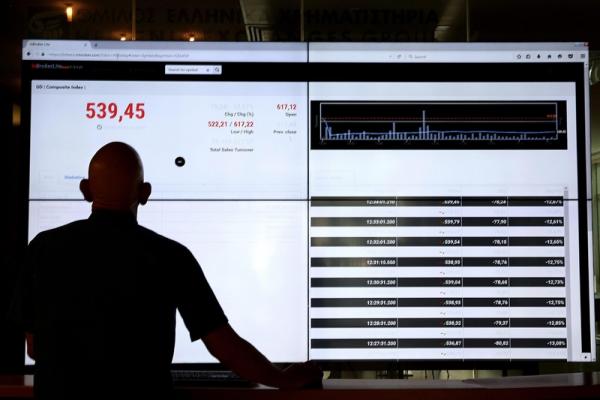New Jersey Resources (NYSE:), the energy services holding company, has reported a solid performance in its third fiscal quarter of 2024, with expectations to hit its Net Financial Earnings Per Share (NFEPS) guidance of $2.85 to $3. The company is seeing growth in its Clean Energy Ventures and remains focused on its utility business, which is projected to contribute over 60% to NFEPS. NJR’s President and CEO, Steve Westhoven, and Senior Vice President and CFO, Pat Migliaccio, provided insights into the company’s performance, growth strategy, and future plans during the earnings call.
Key Takeaways
- NJR is on track to meet its NFEPS guidance for the fiscal year 2024.
- The rate case at New Jersey Natural Gas is expected to be resolved by the end of 2024.
- Clean Energy Ventures has seen year-over-year revenue growth.
- The utility business is expected to be the primary growth driver, with significant investments made and planned.
- NJR has a strong liquidity position and expects a total return of 11% to 13%.
Company Outlook
- NJR anticipates a resolution to the rate case at New Jersey Natural Gas by year-end.
- Over the next two years, NJR plans to invest $1.2 billion to $1.5 billion across the company.
- Cash flow from operations is expected to be between $420 million and $450 million for fiscal 2024.
Bearish Highlights
- Solar pricing, while strong during the summer, is projected to have a minor contribution to earnings for the year.
Bullish Highlights
- The company’s Clean Energy Ventures continues to grow, backed by state renewable portfolio standards.
- NJR maintains a robust liquidity position and a healthy adjusted funds from operations (FFO) to adjusted debt ratio.
Misses
- There are no current data centers within NJR’s service territory, despite an increase in electric use and the demand for reliability.
Q&A Highlights
- NJR is exploring expansion opportunities for its S&T assets at Leaf River.
- The location of solar projects is influenced by power prices, land availability, and developer partnerships.
- Customer growth is supportive of the company’s growth rate, driven by new construction and conversions from other energy sources.
In conclusion, New Jersey Resources (ticker: NJR) is demonstrating a strong performance and strategic focus on its utility business, which is poised to drive future growth. With a steady customer growth rate, ongoing investments in infrastructure, and a positive outlook for cash flow and returns, NJR remains committed to solidifying its position in the energy market. The company’s leadership has conveyed a clear strategy for expansion and investment, particularly in the area of clean energy, while also maintaining financial health and shareholder value.
InvestingPro Insights
New Jersey Resources (NJR) has shown resilience and strategic foresight in its operations, as evidenced by its consistent performance and commitment to shareholder value. The company has a longstanding tradition of maintaining and increasing its dividend, which has been raised for 28 consecutive years. This reflects NJR’s stable financial health and its ability to generate a reliable income stream for investors. Moreover, the company’s stock is known for its low price volatility, providing a sense of security for shareholders who prefer steady performance over high-risk fluctuations.
InvestingPro Data further enriches our understanding of NJR’s market position with key metrics:
- The company’s market capitalization stands at approximately $4.29 billion, indicating its significant presence in the energy sector.
- NJR’s Price/Earnings (P/E) ratio is currently 17.07, which aligns with the industry average, suggesting that the company’s shares are fairly valued based on earnings.
- The dividend yield is an attractive 3.86%, highlighting NJR’s commitment to returning value to its shareholders through consistent dividend payments.
These metrics, combined with the company’s profitability over the last twelve months and the analysts’ prediction of continued profitability this year, paint a picture of a robust company with a solid financial foundation. For readers interested in a deeper dive, there are additional InvestingPro Tips available at which can provide further insights into NJR’s performance and potential investment opportunities.
Full transcript – NewJersey Resources Corp (NJR) Q3 2024:
Operator: Hello. My name is Ellie, and I will be your operator for today. I would like to welcome everyone to New Jersey Resources Fiscal 2024 Third Quarter Conference Call. For those of you listening on the live call, all participants will be on listen-mode only. After today’s participation and presentation, there will be an opportunity to ask questions. [Operator Instructions] Thank you. I’d now like to hand over to Adam Prior, Head of Investor Relations. You may now begin.
Adam Prior: Thank you. Welcome to New Jersey Resources Fiscal 2024 third quarter conference call and webcast. I’m joined here today by Steve Westhoven, our President and CEO; Roberto Bel, our Senior Vice President and Chief Financial Officer; as well as other members of our senior management team. Certain statements in today’s call contain estimates and other forward-looking statements within the meaning of the securities laws. We wish to caution listeners of this call that the current expectations, assumptions and beliefs forming the basis of our forward-looking statements include many factors that are beyond our ability to control or estimate precisely. This could cause results to materially differ from our expectations as found on Slide 1. These items can also be found in the forward-looking statements section of today’s earnings release furnished on Form 8-K and in our most recent Forms 10-K and 10-Q as filed with the SEC. We do not, by including this statement, assume any obligation to review or revise any particular forward-looking statement referenced herein in light of future events. We will also be referring to certain non-GAAP financial measures such as net financial earnings or NFE. We believe that NFE, net financial loss, utility gross margin, financial margin, adjusted funds from operations and adjusted debt provide a more complete understanding of our financial performance. However, these non-GAAP financial measures are not intended to be a substitute for GAAP. Our non-GAAP financial measures are discussed more fully in Item 7 of our 10-K. The slides accompanying today’s presentation are available on our website and were furnished on our Form 8-K filed this morning. Our agenda for today is found on Slide 4. Steve will begin with this year’s highlights, followed by Roberto, who will review our financial results, and we will open up for your questions. With that said, I will turn the call over to our President and CEO, Steve Westhoven. Please go ahead, Steve.
Steve Westhoven: Thanks, Adam, and good morning, everyone. We had a solid quarter at NJR as our complementary portfolio of businesses performed in line with our expectations, and we remain on track to achieve our fiscal 2024 NFEPS guidance of $2.85 to $3 per share. I’ll take you through the highlights as shown on Slide 5. At New Jersey Natural Gas, our rate case is proceeding as expected, and we anticipate resolution before the end of 2024. Clean Energy Ventures reported a solid year-over-year revenue growth while continuing to expand our robust project pipeline. This provides a long runway of investment options that deliver a minimum of high single-digit unlevered returns for each project along with upside potential from increases in power demand. This quarter, we also saw solid contributions from S&T and performance from Energy Services that was in line with expectations. Moving to Slide 6. In November, we provided an initial NFEPS guidance range of $2.70 to $2.85 per share. In February, due to our outperformance at Energy Services, we increased this guidance by $0.15 per share to $2.85 to $3 per share. As discussed in prior calls, we expect our fiscal 2024 to exceed our long-term growth rate of 7% to 9%. Slide 7 outlines the expected NFEPS percentage contribution by business segment for fiscal 2024 and beyond. This year, Energy Services will represent a higher percentage than prior years due to the AMA and recent outperformance. However, in future years, we expect to return to a more normalized segment breakout with over 60% of our NFEPS coming from our utility business. Now let’s discuss our business units, starting with New Jersey Natural Gas on Slide 8. We have invested $345 million year-to-date at New Jersey Natural Gas in fiscal 2024 with 43% of that CapEx providing near real-time returns. This includes the SAVEGREEN program, which helps customers lower their energy usage. In June, SAVEGREEN reached a milestone, serving our 100,000th customer since its inception in 2009. Over the lifetime of this program, participating customers have significantly cut their energy bills and reduce their carbon emissions by over 312 million pounds equal to the energy use of over 18,000 homes. Congrats to the entire SAVEGREEN team on this accomplishment. Customer growth has remained steady all year, driven by a combination of both new construction and conversions. We also see unique business opportunities. This should help drive growth well into the future, such as the redevelopment project in Monmouth County to transform a mall into multifamily units, along with retail, commercial and medical spaces. Turning to Slide 9. Our base rate case is progressing as planned. In May, we adjusted our filing to include nine months of actual results and aim to reach a resolution that balances our customers and company’s interest by the end of 2024. Moving to Slide 10. Clean Energy Ventures continue to add new solar capacity during this fiscal year. We are also growing our solar pipeline, which now includes over 870 megawatts of potential investment options with an additional 51 megawatts under construction. Finally, on Slide 11, our S&T business met expectations this period. Last quarter, we announced the start of a capital investment project at Leaf River to expand working capacity within our caverns. We completed an open season and contracted a portion of that capacity at terms that will pay back the full cost of that investment in less than four years. And with that, I’ll turn the call over to Roberto to review our financial results. Roberto?
Roberto Bel: Thank you, Steve, and good morning, everyone. Slide 13 highlights the main drivers of our NFE for fiscal 2024 third quarter and year-to-date. We reported a net financial loss of $8.9 million or $0.09 per share compared with NFE of $9.7 million or $0.10 per share last year. The quarterly results of our business segment were consistent with our expectations, with steady margin contribution at NJNG and Energy Services and higher revenues at CEX and S&P compared to the prior period, offset by increased depreciation and interest expenses. Clean Energy Ventures reported a net financial loss for the period of $6.7 million. The difference from the prior year period was due to the resolution of an income tax valuation allowance last year that did not reoccur. Looking ahead, we expect a significant year-over-year increase in NFE for the upcoming fourth quarter as Energy Services will recognize a substantial portion of the asset management agreements total revenue during the period. Turning to our capital plan on Slide 14. Over the next two years, we expect to invest between $1.2 billion and $1.5 billion across the Company. For fiscal 2024, we have tightened our overall CapEx range with slight increases at NJNG and S&P, offset by a reduction in the top end at CEV. For NJR FFO, the midpoint of our total CapEx remained largely the same for the year. In November, we will update our CapEx expectations for fiscal year 2025 and provide fiscal 2026. Our capital projections are anchored by strong cash flow from operations. On Slide 15, we expect cash flow from operations to range between $420 million and $450 million in fiscal 2024. Slide 16 displays NJR credit metrics. We project NJR adjusted FFO to adjusted debt to be between 17% and 18% this year. And while we have no plans to issue block equity, our existing dividend reinvestment program includes a waiver discount feature that allows us to raise equity on an opportunistic basis. Slide 17 provides a breakdown of our long-term debt, which is fixed rate with no significant maturities in any particular year. We don’t have any debt maturities for the rest of fiscal 2024 and maintain substantial liquidity at both in NJR and NJNG. With that, I’ll turn it back to Steve for concluding remarks on Slide 18.
Steve Westhoven: Thanks, Roberto. In conclusion, NJR continues to deliver long-term value for its shareholders, anchored by our regulated utility and the infrastructure investment opportunities provided by the other business segments. Our rate case is progressing on schedule, and we look forward to a resolution later this year. To summarize, we offer investors an attractive 11% to 13% expected total return based on our long-term NFEPS growth rate of 7% to 9% and a current dividend yield of approximately 4%. We expect to grow our dividend to our shareholders in line with our earnings as NJR has raised the dividend every year for the last 28 years. Our next dividend announcement will come in September. We appreciate that you took the time to join us today, and I’d like to recognize and thank our employees for all their hard work and dedication that drives our performance. So, let’s now open up the call for questions.
Operator: [Operator Instructions] Our first question comes from Richard Sunderland from JPMorgan. Your line is now open.
Richard Sunderland: Starting with the rate case, is everything still progressing as expected towards the settlement? I’m just looking at the slide language here on settlement discussions, I’m curious if we should expect an announcement, I guess, either this month or next under that time line.
Steve Westhoven: Rich, this is Steve. I’m going to ask Pat Migliaccio to take that question.
Pat Migliaccio: Rich, just as a reminder, this is a plane [indiscernible] base rate case investments around safety, reliability and some IT investments, with the filing of our 10-Q today, that will pave the way for us to file a [indiscernible] with the public utilities in the next couple of days. But as far as some of the discussions, they’re progressing as we would expect them to and no change to our previously communicated timing guidance, which is we expect to finalize the rate case with rents effective sometime in our first fiscal quarter of ’25.
Richard Sunderland: And then turning to CEV, can you quantify your open megawatts and if power prices could be a tailwind to 4Q or even put 2025 earnings above the 7% to 9% outlook range?
Steve Westhoven: So, we’ve got a little bit of this fiscal year lasting a little bit of, I guess, megawatt pricing due for the rest of the season. You can, I guess, look at years past to determine how that could impact our earnings going forward. But I would expect to characterize it should be relatively minor contribution for this year as power prices go.
Operator: [Operator Instructions] Our next question comes from Travis Miller from Morningstar. Your line is now open.
Travis Miller: I guess I was going to ask Richard’s question, but I’ll ask it kind of a different way or clarify if I didn’t hear you correctly. The open megawatts and then the high level, what are you seeing in terms of pricing? Is it stronger or weaker than you expected? Not necessarily for earnings, but just in general in the market, how are you seeing solar pricing?
Steve Westhoven: So, I mean you can see the pricing as well as we can if you look at [indiscernible] pricing is occurring on a daily basis again that it’s been remarkable for the summer in comparison to previous summers. But like I just said to Rich, if you’re looking at an indication on how it may impact us, you can look at years past. But I think all in all, not much of the fiscal year last for us, and you have to see some extreme pricing to make a significant change in earnings this year.
Travis Miller: And about how much do you still have to price?
Steve Westhoven: I don’t have that number off the top of my head. But if you look at our portfolio and the ratings, I’m sure you can calculate it out on how much that price on a daily basis, especially considering big portions of our portfolio are grid [indiscernible].
Travis Miller: Okay. Okay. Very good. And then staying on that subject cost side, what are you seeing in terms of your growth, not necessarily CapEx but just growth in solar costs. What are you seeing on the cost side, any new projects?
Steve Westhoven: I think they’ve been pretty steady characterized. If you’re talking about our cost and cost development, just our normal construction. I think things have been steady for the, I guess, recent past, nothing remarkable there either. The only thing I’d add there is that the states are still have a very robust in support of the renewable portfolio standard. So, we’re still able to make investments, and you can see the size of our portfolio continues to grow as well.
Travis Miller: And then different subjects, high level, everybody is asking the electric utilities about data centers. From your perspective, I’ve understood that a lot of gas utilities are seeing demand or have had demand for a while from data centers in terms of either primary or backup generation. What does it look like in your service territory, have you had data center customers for a while? Or are you seeing demand for that either backup or primary on-site gas generation or service?
Steve Westhoven: So, we don’t have — I don’t believe we have any data centers within our service territory at this point. But I’d add to that, that the increase in electric use, the increase in need for reliability matches up nicely with our portfolio across really all of our companies that reliability, the need for constant electricity in order to run those facilities, whether it’s our utility and the infrastructure there, our S&T assets, supportive of power prices for our CEV portfolio, volatility that gets introduced for our Energy Services segment. All those business units should participate in this market as it becomes tighter and there’s a greater demand for power and reliability.
Operator: Our next question comes from Michael Gaugler from Janney Montgomery Scott. Your line is now open.
Michael Gaugler: Steve, I had one more power price question for you. So, as you’re looking forward, future planning for CapEx, does it make you want to invest more in the sector given where power prices are going, given what you’re seeing, particularly in the — like you referenced the high prices we’re seeing in PJM.
Steve Westhoven: Yes. I think like I said to Travis, it supports all our infrastructure, infrastructure investment, and it really supports our general strategy in growing that infrastructure going forward. You saw the recent PJM capacity auction that was 10x where it was previous year. That’s a real market signal that you put out there and certainly, there is [indiscernible] market signals that have been supportive as well. So, answer yes. It certainly supports our business and really the strategy that we’ve been talking about for quite some time.
Michael Gaugler: Does it make sense to look at projects that are actually — that are already — sorry, already operating?
Steve Westhoven: Yes. I mean we’ve done that, of course of the business in the past, whether that’s a portfolio at CEV or operating assets at S&T, we’ve looked at those in the past. So yes, I’d say, yes, to that.
Michael Gaugler: Okay. And then one last one. For the S&T segment. beyond what you’re doing at Leaf River to expand capacity, what areas you’re focused on in terms of future expansion in that business?
Steve Westhoven: Anywhere that we can get a contract that’s long term that can support the expansion, whether it’s Adelphia Gateway or whether it’s a Leaf River, and we could essentially grow organically, making it easy to get permits, you’re connecting to an existing asset, everything that’s supportive, we’ll look at — we don’t have anything to announce beyond what we’ve talked about already with several of our organic expansions but know that we are pursuing that
Operator: Our next question comes from Robert Mosca from Mizuho. Your line is now open.
Robert Mosca: Just wondering if you guys could talk about some of the business opportunities you referenced in your customer growth commentary. Just wondering, how significant that is, and is this something that’s already captured in your 7% to 9% growth outlook?
Steve Westhoven: I’m going to ask Pat Migliaccio to take that question.
Pat Migliaccio: So, look, as we think about the customer growth, we’re still in that 1.7% marker, really included that just to illustrate that as you think about New Jersey strategic, but more specifically our service territory. This is a growing environment service territory. So, we’ve got a lot of tailwinds both from the new construction market because you continue to see people coming into modest ocean cavern specifically, but then also a very healthy conversion market because there are a number of customers are still on oil, propane and the like converting over. So, I would characterize it as something that’s generally supportive of the utilities growth rate.
Robert Mosca: Appreciate it, Pat. And maybe turning to Leaf River looking at that request for authorization to use some of those leasing facilities for hydrogen stores. Just wondering what the latest on that is? And how does that — what’s that interplay with this working capacity expansion that you seem to have that ID on the gas side?
Steve Westhoven: So, we’re keeping all our options open at Leaf River and certainly exploring, like I said right before, every option that is available to us in order to expand our S&T assets, there’s been a lot of market pull in that area. You’ve seen that in the contracts that have been executed out there, certainly elevating in price. So, I think the view on that at this point is a marker that basically preserves our position in order to expand in that fashion. We don’t really have anything to announce just yet. But you can see how we’re thinking about that asset and many uses that it might be able to be applied into this market.
Robert Mosca: Got it. That’s helpful. And maybe just a quick last one for me on the subject of power. Just wondering, is does electricity sales become more of a factor in where you decide to locate some of these solar projects? Or are the economics still really going to be focused on what the solar credits look like in the space that you do construct?
Steve Westhoven: Yes. I think power prices and power move so quickly, it’s pretty functional. I know there are certain areas that you’ve got constraints so you have to price pops. But for the most part, there’s a higher of areas that we need to clear in order to build a solar project, having the land, having the interchangeability, having the right transaction with the developer and so on and so forth. I think those more of a precedent. I believe that power for the most part as it increases will increase, maybe not uniformly, but generally speaking, that drives [indiscernible] boats in that way.
Pat Migliaccio: I mean maybe is lumping to ask there, Rob. [indiscernible] is just keep in mind, when you look at our assets, right, the type of revenues that that come from power reminder, right, on a record year is about 10%, 15% only. So, we look at it in that lens.
Operator: [Operator Instructions] I’d now like to hand back over to Adam Prior for their remarks.
Adam Prior: Thank you, Ellie, and I’d like to thank everyone on the call here today for joining us. And as always, we appreciate your interest and investment in NJR. Thank you so much, and have a good rest of your day.
Operator: Thank you, everyone, for attending today’s call. You may now disconnect. Have a wonderful day.
This article was generated with the support of AI and reviewed by an editor. For more information see our T&C.
Read the full article here
















